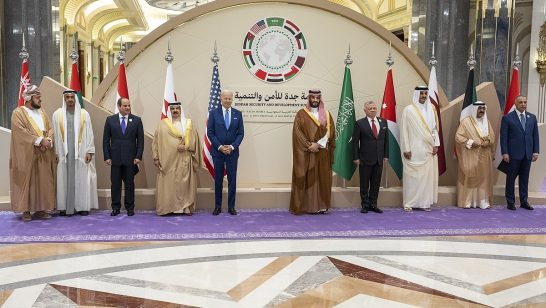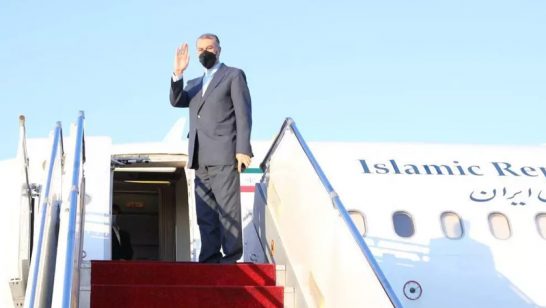
Recent statements by US Secretary of State Antony Blinken and Iranian Foreign Minister Javad Zarif clearly reflect a continuing interest in the Joint Comprehensive Plan of Action (JCPOA), albeit with each not wanting to take the first step. A synchronized restoration of the JCPOA as a springboard towards a more far-reaching, ambitious endeavour could provide a unique opportunity to reengage without losing face, as well as respond to the legitimate concerns raised by the deal’s critics.
It is no secret that very few countries in the Middle East truly welcomed the JCPOA when it was concluded. Public reactions were essentially what governments deemed politically appropriate, in various shades of grey, given the strong relations most of the region’s countries have with the United States. Even today, the Iranian nuclear programmeand US–Iran relations appear to be amongst the most sensitive issues for American friends in the region, be they Israel, Saudi Arabia or other Arab States.
The JCPOA puts into place restrictions on Iran’s nuclear program that exceed those required by the Treaty on the Nonproliferation of Nuclear weapons (NPT)– which it and every state in the region is party to, with the exception of Israel. Nevertheless, significant concerns were raised about the agreement itself, particularly about its sunset clauses which make its validity a function of a fixed rather than indefinite duration. This caused serious anxiety despite the fact that Iran’s obligations to the NPT, as well as to its Comprehensive Safeguards Agreement with the IAEA andthe Additional Protocol, would continue in perpetuity.
The other major concern raised was that the agreement would pave the way for Iran’s re-inclusion into the international community as a member in good standing and would release to it substantial impounded funds, without addressing its aggressive role in regional conflicts. In essence, the critics fear that the deal would enable Iran to gain greater political stature and economic assets to direct towards its regional policies. Critics also argue that the JCPOA would even provide Iran with a stronger foundation on which to expand its nuclear program once the sunset clause sexpire unless a longer-term agreement can be reached.
I previously raised these issues with former US Secretary of State John Kerry when we were leading our respective countries’ foreign policies. His response then was that the JCPOA was the best achievable deal at the time and was to be seen as a first step to be complemented by other agreements that would cover the concerns I mentioned. Needless to say, my preference was that these concerns be met from the outset.
If that was the understanding of the parties when the deal was concluded in 2015, without prejudice to bilateral or regional security arrangements in the Arab League or the Gulf Cooperation Council (GCC), why not address that now by putting the JCPOA back on good footing and then build on it by addressing these major concerns with the objective of creating a Middle East security architecture founded on two fundamental pillars? The geographical scope would cover the Arab world, Israel and Iran. Ultimately, arrangements with Turkey would also be beneficial to the greater region.
The first pillar, which should have priority, would focus on disarmament and arms control and would prohibit nuclear and other weapons of mass destruction from the region. This could build on the JCPOA, NPT, Chemical and Biological Weapons Conventions (CWC/BWC), and the Comprehensive Nuclear–Test–Ban Treaty (CTBT). Commitments under this pillar would be from all regional states without prejudice, preference or exception and remain indefinite in duration.
The region has repeatedly considered these issues. Now it is high time to end the nuclear proliferation double standards and politically motivated procrastination by embarking on sustained and serious negotiations to create a nuclear-weapons-free Middle East as first proposed in 1974, as well as ridding the region of other weapons of Mass Destruction, as was suggested in the early 1990s.
The second complementary pillar would deal with confidence-building measures, conflict resolution and cooperation.For example, countries could look to the regional security declaration that was almost concluded at the Arms Control and Regional Security (ACRS) multilateral working group emanating from the Madrid Middle East Peace Conference.This declaration was ultimately not adopted because of disagreements on issues relating to nuclear disarmament and self-determination for all nations in the region to include the Palestinians. This year is the 30thanniversary of the Conference, a good reason to visit such a regional security approach. Lessons drawn from the security basket of the OSCE experiences could also be useful, but without falling into the naïve mistake of trying to emulate experiences out of context. Noteworthy in this respect is the recent article published in The Guardian by Former Iranian Ambassador Hussein Mussavian and Dr Abdel Aziz ELSager, a prominent Saudi Arabian Analyst, calling for reciprocal confidence-building measures.
In the context of the second pillar, an initial step could be the development of general guidelines for regional practices of both a security and political nature. These could include inter alia combating terrorism, the illicit arms and drugs trade, noninterference in the internal affairs of others and ensuring good neighbourly relations. This would all ultimately help in the resolution of the major and perennial conflicts in the region if the political will exists to do so. While a complete construct would take time and require a different political context, steps towards a regional security architecture umbrella could provide an opportunity for progress even before full recognition or normalization is achieved.This is often the case through the United Nations, where states in conflict, and even without reciprocal recognition, frequently engage in multilateral negotiations and accept commitments to international treaties in a global context that have regional implications.
Through a dual pillared approach with priority for disarmament and arms control, the legitimate reservations and hesitations of all parties can be addressed. Pursuing these goals will require both widespread international support as well as direct negotiations amongst the regional parties or at least amongst some of them. My suggestion, therefore, is that while the JCPOA gets on track, this process is initiated and developed under the auspices of the United Nations, with the P5 as convenors. They should invite all the regional parties to meetings to establish the negotiating modalities of the two pillars, where regional players would have the main but not necessarily exclusive role.
This is an ambitious proposal. However, the issues at hand cannot be partially addressed or concluded piecemeal. Far worse than failure would be to let these issues fester further, with the region facing even more ominous consequences in the future.
The opinions articulated above represent the views of the author(s), and do not necessarily reflect the position of the European Leadership Network or any of its members. The ELN’s aim is to encourage debates that will help develop Europe’s capacity to address the pressing foreign, defence, and security policy challenges of our time.
Image: Flickr, EEAS



